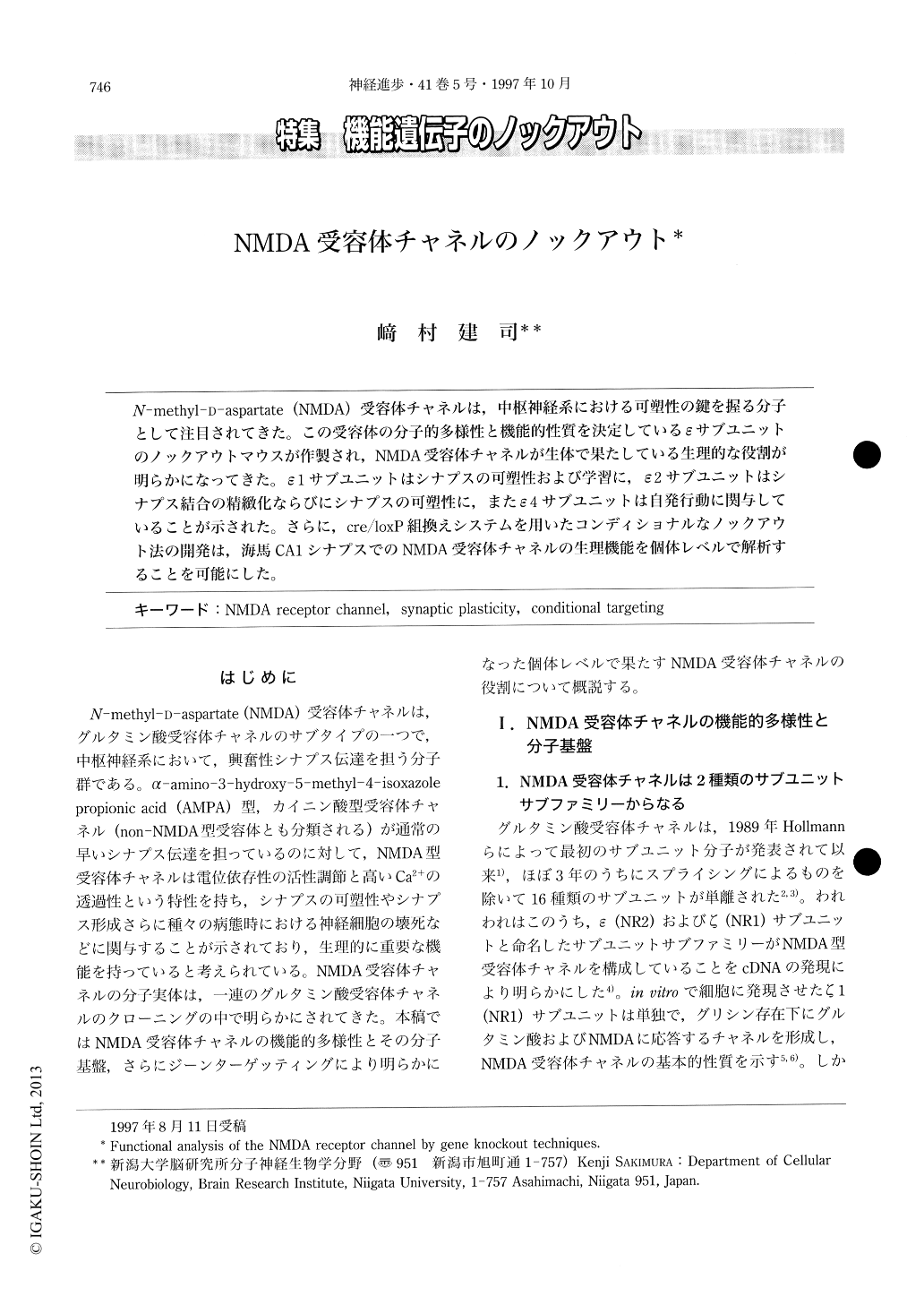Japanese
English
- 有料閲覧
- Abstract 文献概要
- 1ページ目 Look Inside
N-methyl-D-aspartate(NMDA)受容体チャネルは,中枢神経系における可塑性の鍵を握る分子として注目されてきた。この受容体の分子的多様性と機能的性質を決定しているεサブユニットのノックアウトマウスが作製され,NMDA受容体チャネルが生体で果たしている生理的な役割が明らかになってきた。ε1サブユニットはシナプスの可塑性および学習に,ε2サブユニットはシナプス結合の精緻化ならびにシナプスの可塑性に,またε4サブユニットは自発行動に関与していることが示された。さらに,cre/loxP組換えシステムを用いたコンディショナルなノックアウト法の開発は,海馬CA1シナプスでのNMDA受容体チャネルの生理機能を個体レベルで解析することを可能にした。
The N-methyl-D-aspartate (NMDA) receptor channel is one of the subtypes of the glutamate receptor channel. The NMDA receptor channel is gated both by ligands and by voltage, and is highly permeable to Ca2+. These properties directly relate to its important physiological roles in synaptic plasticity as a molecular coincidence detector. Some forms of long-term potentiation and long-term depression, which are thought to underlie learning and memory, are critically dependent on the NMDA receptor channel. Multiple ε (NR2) subunits are major determinants of the NMDA receptor channel diversity.

Copyright © 1997, Igaku-Shoin Ltd. All rights reserved.


